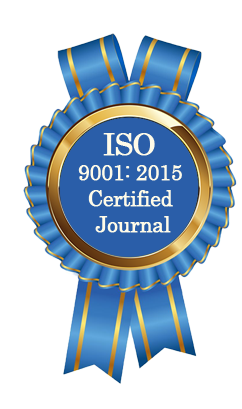| All | Since 2020 | |
| Citation | 105 | 60 |
| h-index | 4 | 4 |
| i10-index | 3 | 2 |
WJAHR Citation 
Login
News & Updation
Best Article Awards
World Journal of Advance Healthcare Research (WJAHR) is giving Best Article Award in every Issue for Best Article and Issue Certificate of Appreciation to the Authors to promote research activity of scholar.
Best Article of current issue
Download Article : Click here
Indexing
Abstract
THE EFFICACY OF ACETAMINOPHEN ADMINISTRATED INTRAVENOUSLY FOR PREVENTION OF ROCURONIUM ASSOCIATION PAIN WITHDRAWAL RESPONSE
Dr. Hiba Sami Kamil*, Dr. Jaber Mohsin Kamil and Dr. Hayder Samir Abdulatief
ABSTRACT
Background: Withdrawal movement during rocuronium injection is a common adverse effect. Rocuronium-associated injection pain/withdrawal response occurred frequently when injection intravenously during anesthesia induction. Many studies had reported that pretreating with antipyretic analgesics (AAs) could reduce the occurrence of RAIPWR, but there was no consensus yet. Aim of the study: The aim of this study was to compare the efficacy of IV acetaminophen and IV lidocaine, with tourniquet, for the prevention of withdrawal movement from rocuronium injection. Also examine the incidence and degree of movement after the administration of rocuronium. Methods: This randomized Double Blind study enrolled 60 American Society of Anesthesiologists (ASA) I-II patients undergoing general anesthesia and positive pressure ventilation. They were randomly assigned to three treatment groups. After occluding venous drainage using a tourniquet on the upper arm, the saline group received 5 ml of 0.9% sodium chloride solution, the lidocaine group received(5 ml) 40 mg of lidocaine, and the acetaminophen group received (5 ml) 50 mg of acetaminophen. The tourniquet was released after 120 seconds and anesthesia induction was performed using propofol 2 mg/kg followed by rocuronium 0.6 mg/kg. The withdrawal movement was graded on a four-point scale. Results: Statistical analysis was done using SPSS shown significant reduction of Rocuronium-associated injection pain/withdrawal response to 40% in acetaminophen group, and to 35% in lidocaine group. The incidence of RAIPWR reach 75% in our study. Conclusion: Patients received 40 mg (0.2% lidocaine 5 ml) less withdrawal movement than patents received (acetaminophen) 50 mg (5 ml). in other hand both group (lidocaine, acetaminophen) less withdrawal movement than placebo group. So acetaminophen and lidocaine reduced the incidence of withdrawal movement after rocuronium injection compared with saline.
[Full Text Article] [Download Certificate]
